Central Texas is a region of contrasts. Known for its wildflowers in spring and the warm glow of sunsets, this area also confronts gardeners with climate challenges.
From scorching summers to periods of drought, landscaping in Central Texas requires a delicate balance of beauty and resilience. That’s where drought-tolerant plants come in. They not only conserve water but also paint a vibrant landscape that reflects Texas’s natural beauty.
Here’s a list of 15 drought-tolerant plants for Central Texas that you can consider growing in your yard.
Trees That Thrive in Drought-Tolerant Landscape
When one thinks of drought-tolerant plants, trees might not be the first thing that comes to mind. However, they’re essential in providing shade and structure to gardens, especially in Central Texas:
Texas Redbud (Cercis canadensis var. texensis)

The Texas Redbud blooms in early spring, a small ornamental tree, producing a spectacle of pink to purple flowers even before its heart-shaped leaves appear. This Central Texas native plant can easily thrive in dry conditions.
Loved by pollinators such as bees, butterflies, and hummingbirds. Plant Texas Redbud as a specimen tree in the front yard or as a focal point in the garden. You can also incorporate it into mixed borders or naturalized areas.
- Height: 10 to 20 feet
- Spread: 15 to 20 feet
- USDA Zones: 6 to 9
- Common Names: Redbud, Texas Judas Tree
Mexican Buckeye (Ungnadia speciosa)
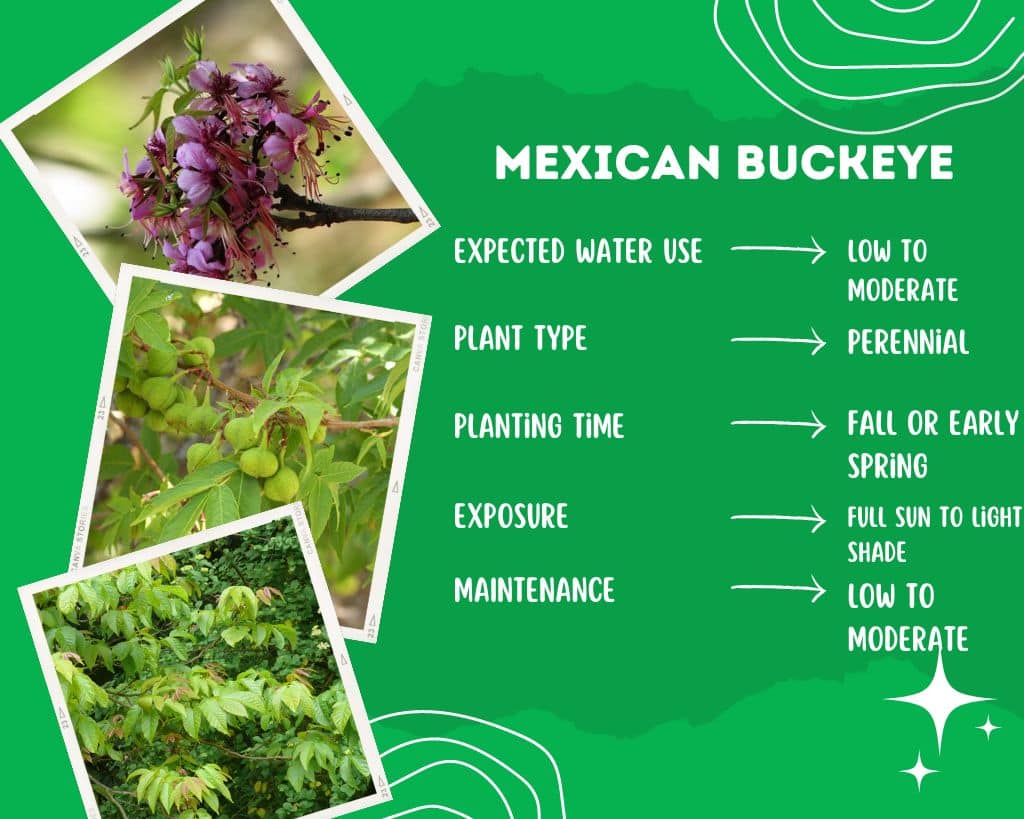
This tree is a favorite among many gardeners with its pink spring flowers and eye-catching seed pods in the fall. It’s also known to attract butterflies, adding a dash of dynamism to your garden.
This deciduous shrub or small tree is often found in rocky or limestone soils, and it can be seen in various habitats such as woodlands, canyons, and along stream banks.
Use Mexican Buckeye as an understory tree beneath taller shade trees or plant it as a specimen tree in a smaller yard. Its spring flowers and fall foliage provide seasonal interest.
- Height: 10 to 20 feet
- Spread: 10 to 20 feet
- Zones: 6 to 9
- Common Names: Monillo, Mona, Texas Buckeye, Spanish Buckeye
Eve’s Necklace (Sophora affinis)

As enchanting as its name suggests, Eve’s Necklace offers delicate chains of pink flowers resembling a beaded necklace. This tree is visually pleasing and resistant to drought and most garden pests.
Mostly found in the Central and North Central regions of Texas, Eve’s Necklace is known to be culturally significant and valued for its ornamental qualities.
Use it to form natural hedges or screens. It can also be pruned into a small tree shape. Plant it near seating areas or along garden paths to enjoy its fragrant flowers up close.
- Height: 10 to 20 feet
- Spread: 10 to 15 feet
- Zones: 7 to 9
- Common Names: Eve’s Necklace pod, Texas Sophora, Pink Sophora, Necklace Tree.
Also Read: 22 Best Drought-Tolerant Plants For North Texas: Flourish Without The Fuss
Vibrant Shrubs and Flowers
As foundation plants or standalone stars, shrubs, and flowers breathe life into any garden:
Flame Acanthus (Anisacanthus quadrifidus var. wrightii)
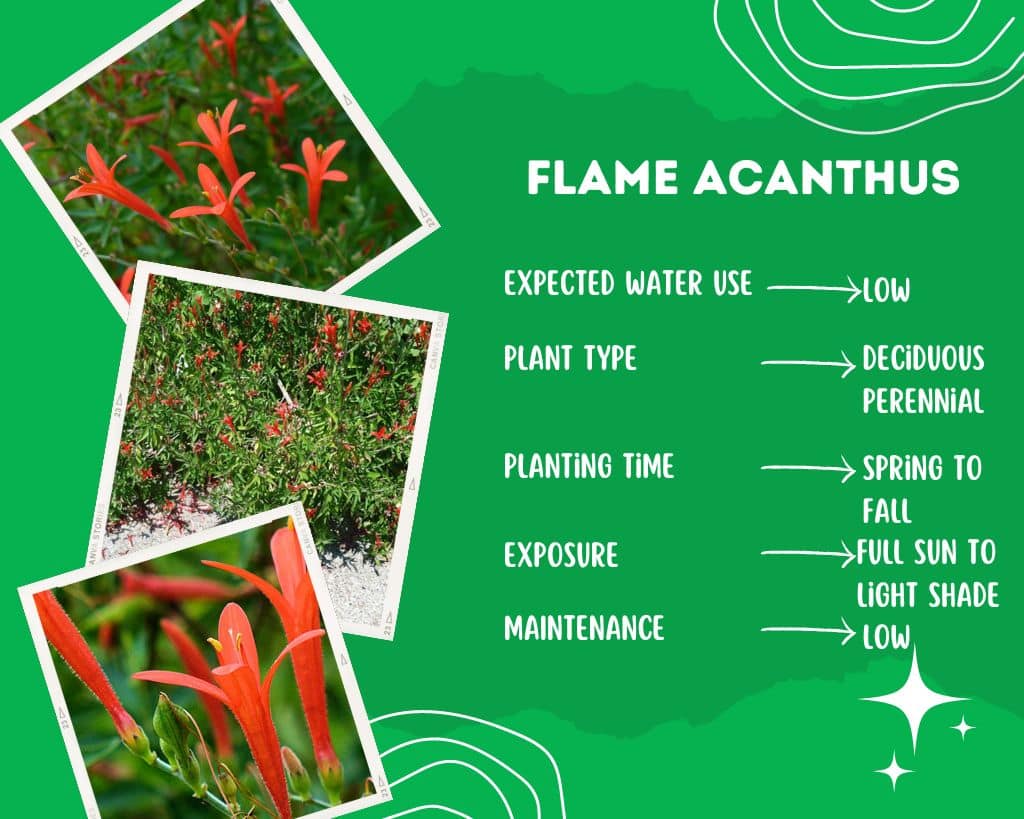
This compact shrub lights up any garden with its fiery red-orange blooms, attracting hummingbirds and butterflies in abundance. It is known to survive in longer periods of dry weather.
Flame Acanthus is native to Central and South Texas and other parts of the southwestern United States and northern Mexico. It can be used along borders and edges of garden beds, xeriscaping, as a compact hedge or screen, and as a focal point in your garden design, mainly when it’s in bloom.
During winters, it experiences deciduous behavior, shedding its leaves and entering a period of dormancy; however, the plant’s hardy nature allows it to survive the colder months, regrow leaves, and resume flowering as temperatures warm up in the spring.
- Height: 3 to 6 feet
- Spread: 3 to 6 feet
- Zones: 7 to 11
- Common Names: Hummingbird Bush, Wright’s Desert Honeysuckle, Wright Acanthus, Mexican Flame, Wright’s Mexican Flame
Texas Lantana (Lantana urticoides)
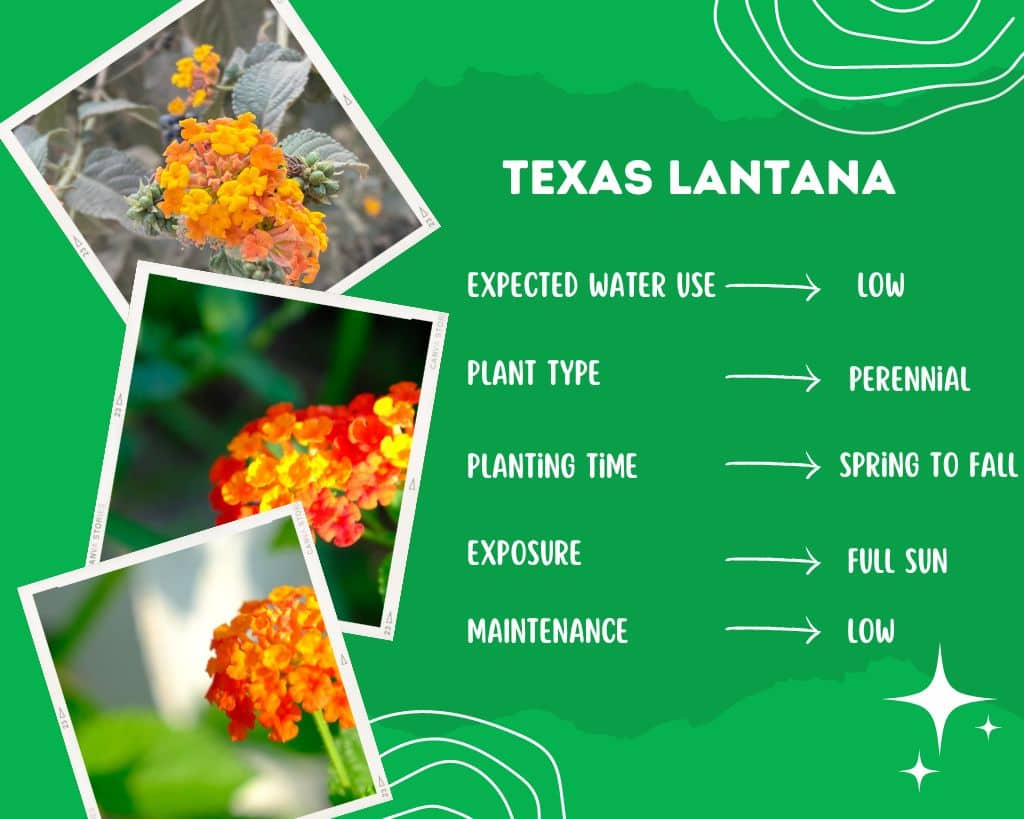
Renowned for its multi-colored blooms and drought tolerance, Texas Lantana is an excellent choice for those looking to add a pop of color to their landscape.
This compact, spreading shrub impresses with mildly scented leaves and bright orange or yellow flowers. Due to its low spreading growth habit, it’s well-suited for ground cover or as a border plant.
It is native to Texas and grows impeccably in various soil types. Lantana loves full sun and requires minimal watering.
- Height: 2 to 4 feet
- Spread: 3 to 6 feet
- Zones: 8 to 11
- Common Names: West Indian Shrubverbena, Calico Bush, Lantana Hispida, Lantana Horrida
Blackfoot Daisy (Melampodium leucanthum)
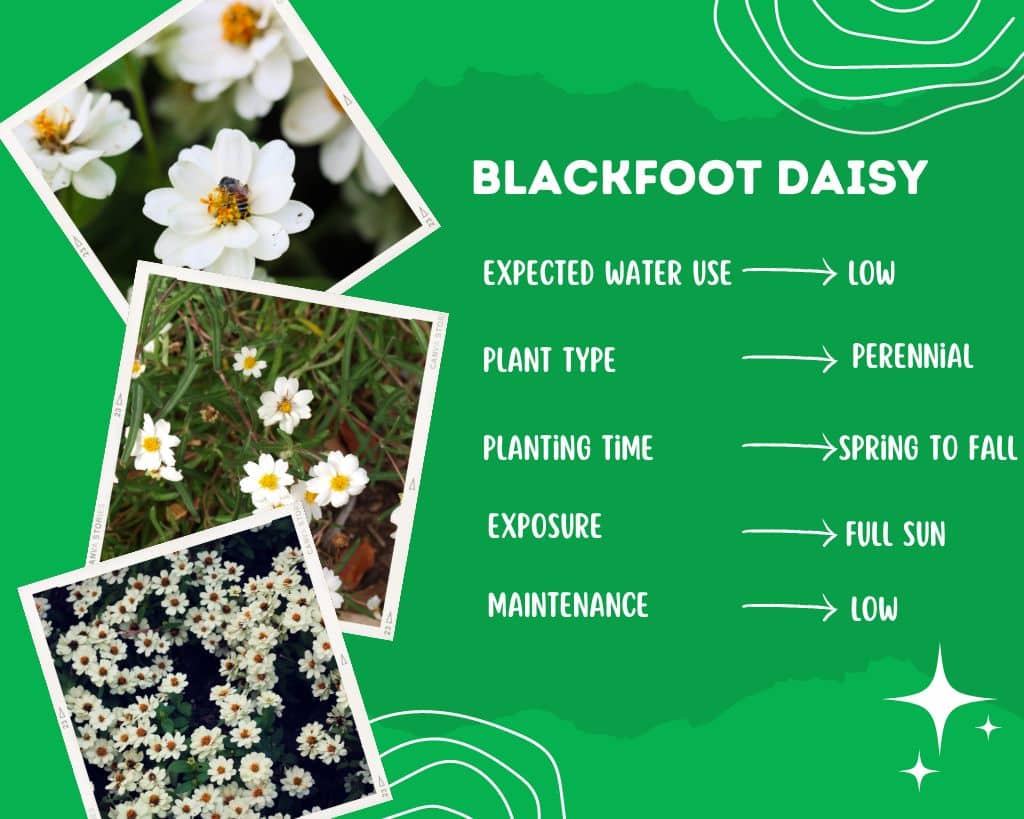
This perennial offers a constellation of white flowers, proving that drought-tolerant doesn’t mean dull. The flowers of Blackfoot Daisy are long-blooming, typically lasting from spring through fall.
This tough perennial is an excellent addition to borders, rock gardens, and meadows. It is deer-resistant and pollinator friendly.
- Height: 6 to 12 inches
- Spread: 12 to 18 inches
- Zones: 4 to 9
- Common Names: Rock Daisy, Plains Blackfoot, Arnica
Mealy Blue Sage (Salvia farinacea)
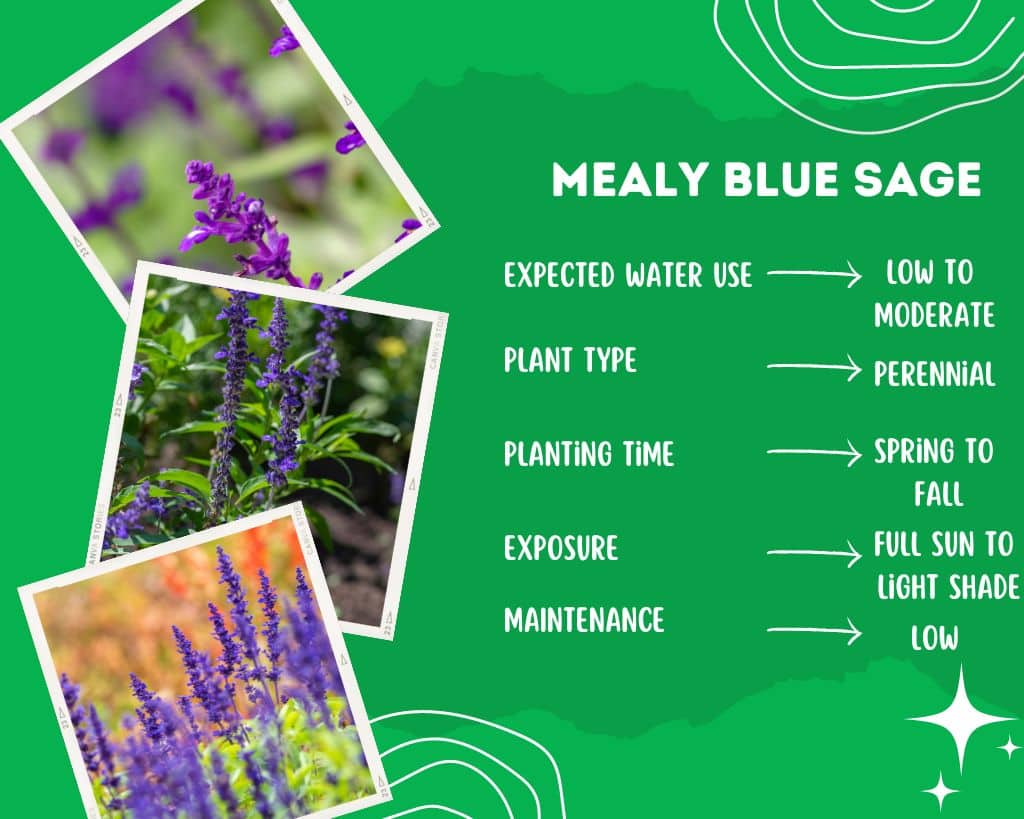
Known for its spikes of blue or purple flowers, this plant is a favorite among pollinators and gardeners. This herbaceous perennial offers a long blooming period from late spring to early fall.
It can be paired with red yucca to create an attractive and complementary color scheme. The contrast between the blue-purple flowers of mealy blue sage and the bright red flowers of red yucca will enhance your garden’s visual appeal.
It is highly drought-tolerant and doesn’t require enough maintenance to thrive. You can add it to the borders and beds.
- Height: 1 to 3 feet
- Spread: 1 to 2 feet
- Zones: 8 to 10
- Common Names: Mealycup Sage
Succulents & Cacti
One of the best-suited drought-tolerant plants for Central Texas is succulents and cacti.
Parry’s Agave (Agave parryi)
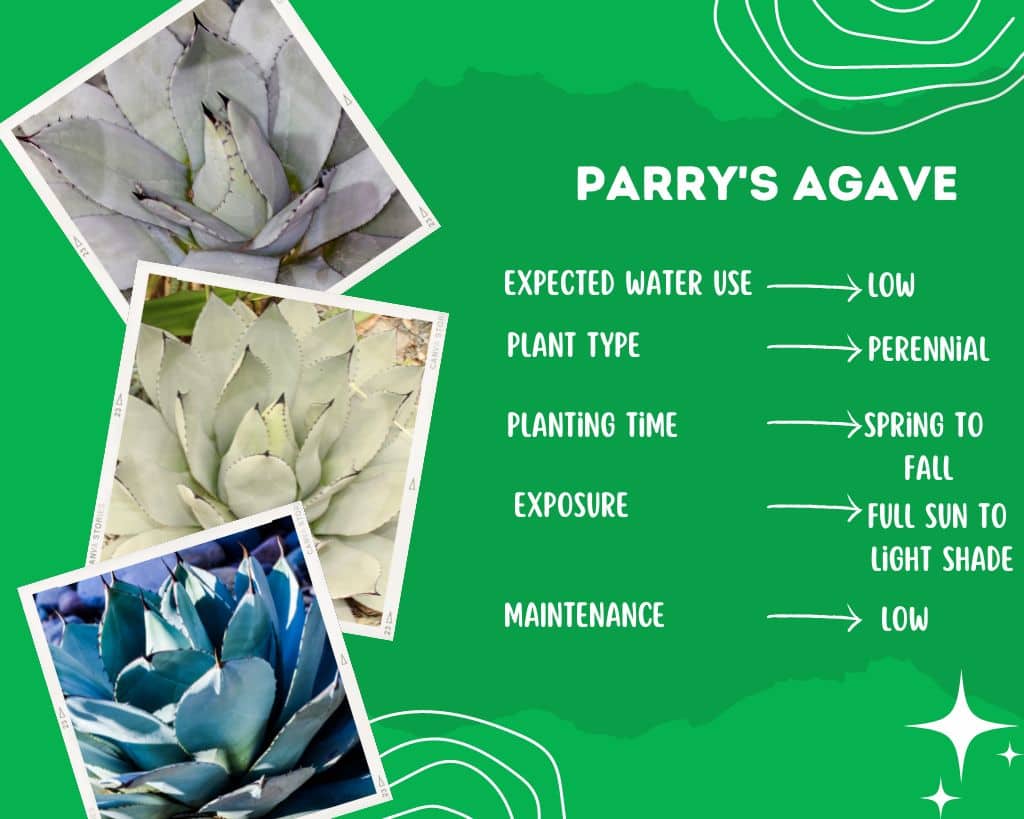
With its rosette of thick, green foliage, this agave adds a touch of desert beauty to gardens. Also known as century plants, agaves can live up to many decades before flowering.
Of course, agave can survive extreme heat and drought with ease. This succulent can attract birds and butterflies. It is highly deer resistant as well.
It is excellent for succulent gardens, borders, and rock or gravel gardens. Gardeners plant Parry’s Agave in containers on patios or decks to bring its unique character to smaller spaces.
- Height: 1 to 2 feet
- Spread: 2 to 3 feet
- Zones: 7 to 10
- Common Names: Century Plant
Engelmann Prickly Pear (Opuntia engelmannii)
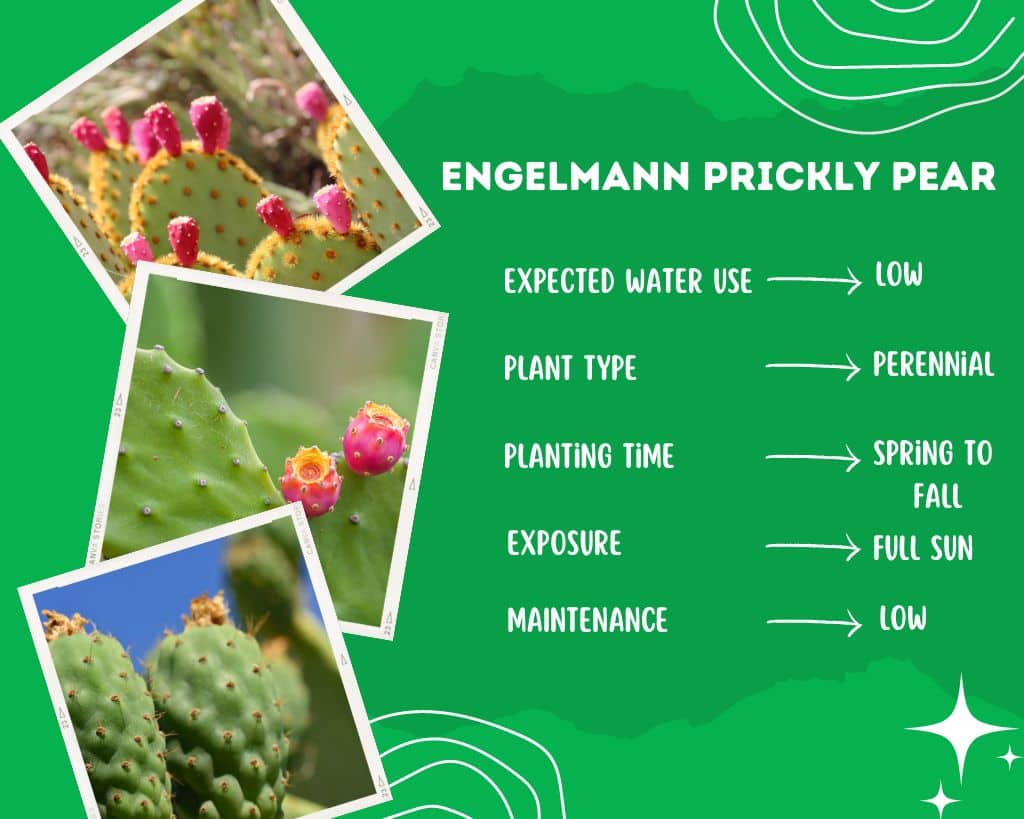
This cactus showcases yellow flowers in spring and red fruit in summer, making it a year-round attraction. The short spines come in various colors, such as white, brown, and gray.
The red fruit is edible and used to make jelly, jams, and syrups. It is a low-maintenance plant that requires minimal care to grow. Thrives in full sun to partial shade, it can also tolerate various types of soils.
It can be a great addition to xeriscapes and drought-tolerant landscapes, rock gardens, desert gardens, and cactus gardens.
- Height: 1 to 2 feet
- Spread: 3 to 6 feet
- Zones: 6 to 10
- Common Names: Prickly Pear Cactus, Texas Prickly Pear, Lindheimer’s Prickly Pear, Lindheimer Prickly Pear
Ground Covers and Grasses
In the vast expanses of Central Texas gardens, ground covers and grasses often play an unsung yet pivotal role. These low-growing plants prevent soil erosion and maintain moisture and create a textured tapestry that complements taller plants.
Sideoats Grama (Bouteloua curtipendula)
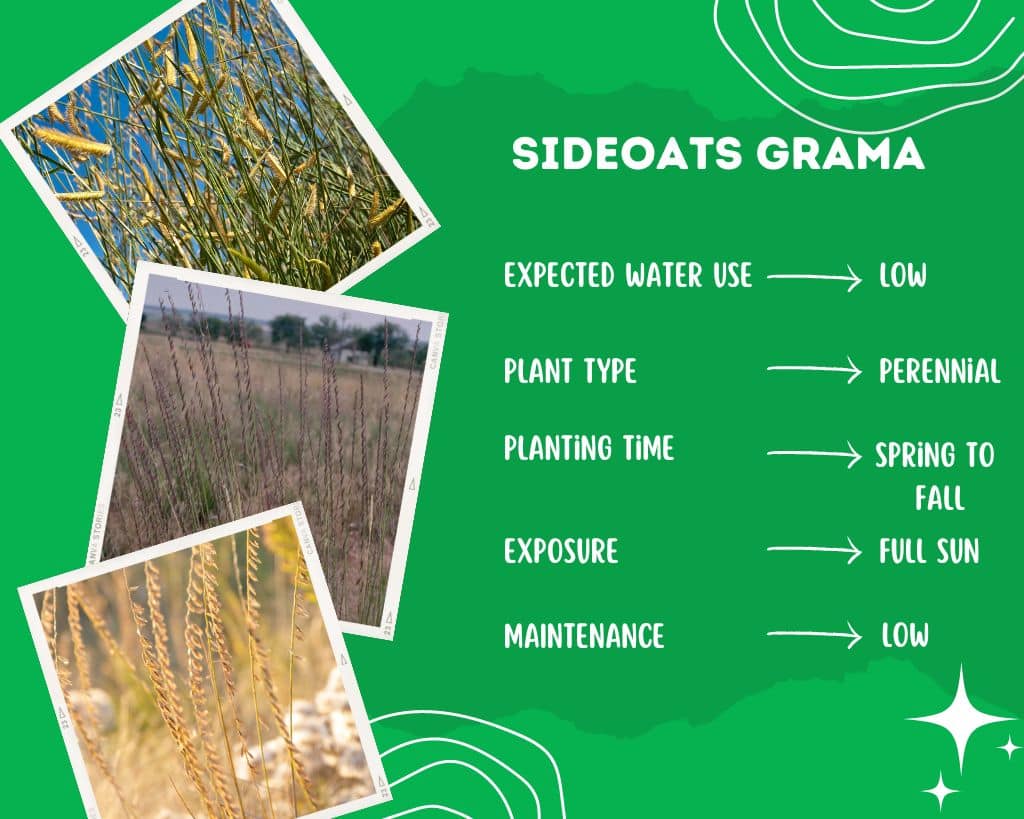
Awarded the title of Texas’s state grass, Sideoats Grama offers slender stems adorned with oat-like seeds. Its drought-tolerant nature makes it a perfect match for the region’s climate, requiring minimal water once established.
It can be used as a ground cover, erosion control measure, or even a component of native plant gardens. It remains unaffected by the attacks of pests and diseases.
- Height: 2 to 3 feet
- Spread: 1 to 2 feet
- Zones: 3 to 9
- Common Names: Banderilla, Banderita, Navajita
Gulf Muhly (Muhlenbergia reverchonii)
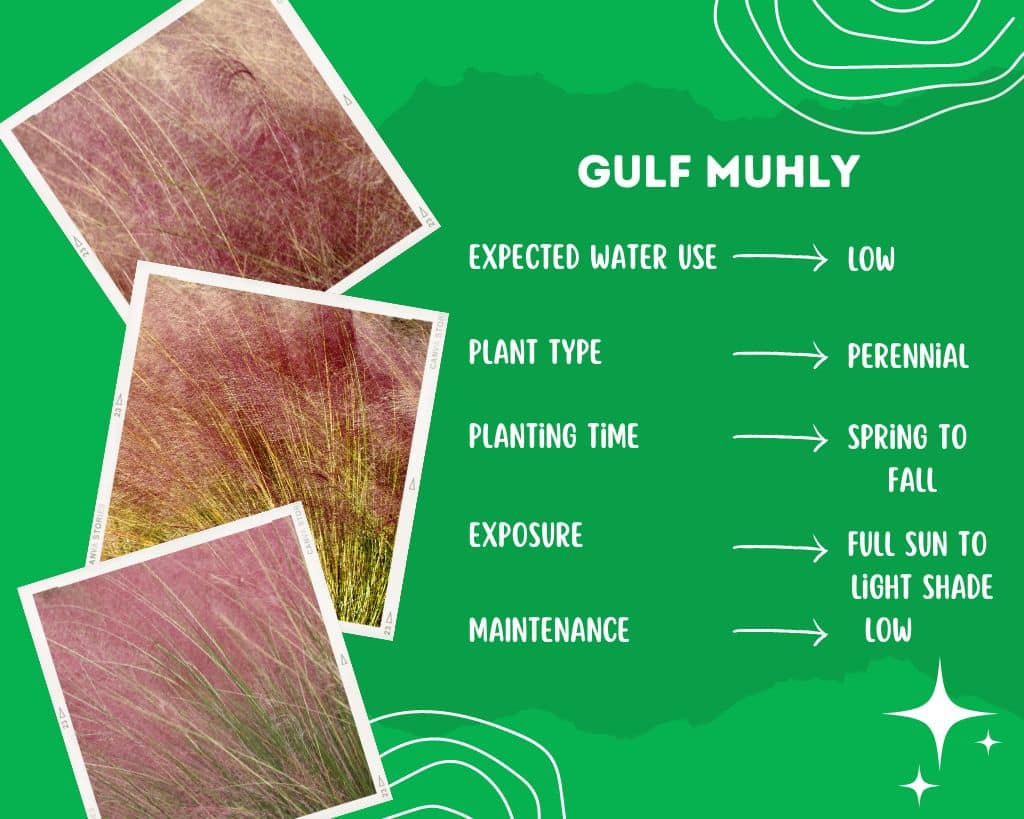
Gulf Muhly is a perennial grass that captures attention with its pink-hued, feathery plumes during the fall. Beyond its aesthetics, Gulf Muhly is prized for its drought-tolerant nature, making it an excellent choice for the region’s arid conditions.
In Central Texas landscapes, Gulf Muhly can be used as a focal point, border planting, or mass planting to create eye-catching displays.
It is highly deer resistant and remains unfazed by pests or diseases. Gulf Muhly naturally offers refuge to numerous small birds and pollinators.
- Height: 2 to 3 feet
- Spread: 2 to 3 feet
- Zones: 5 to 10
- Common Names: Pink Muhly Grass, Seep Muhly
Lamb’s Ear (Stachys byzantina)
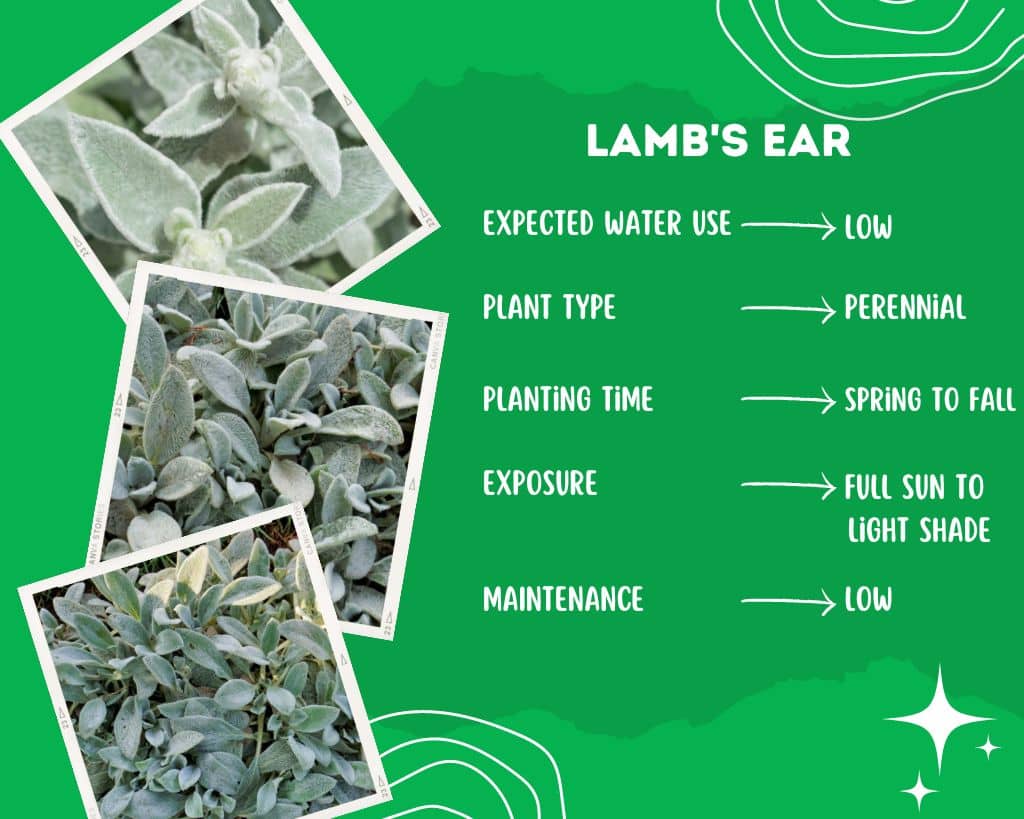
This ground cover stands out with its silvery foliage. A non-native to Central Texas that belongs to parts of Turkey, Iran, and the Middle East. However, due to its attractive foliage and drought-tolerant properties, it has been widely cultivated and grown as an ornamental plant in various regions, including Central Texas.
Its adaptability to various soil types and low-maintenance requirements make it a versatile addition to formal and informal landscapes. Whether lining walkways, accentuating borders, or spilling over containers.
Lamb’s Ear is in various habitats, from home gardens and landscapes to public parks and commercial spaces, showcasing its widespread popularity in the region.
- Height: 6 to 12 inches
- Spread: 12 to 18 inches
- Zones: 4 to 8
- Common Names: woolly betony, donkey’s ears
Dusty Miller (Jacobaea maritima)
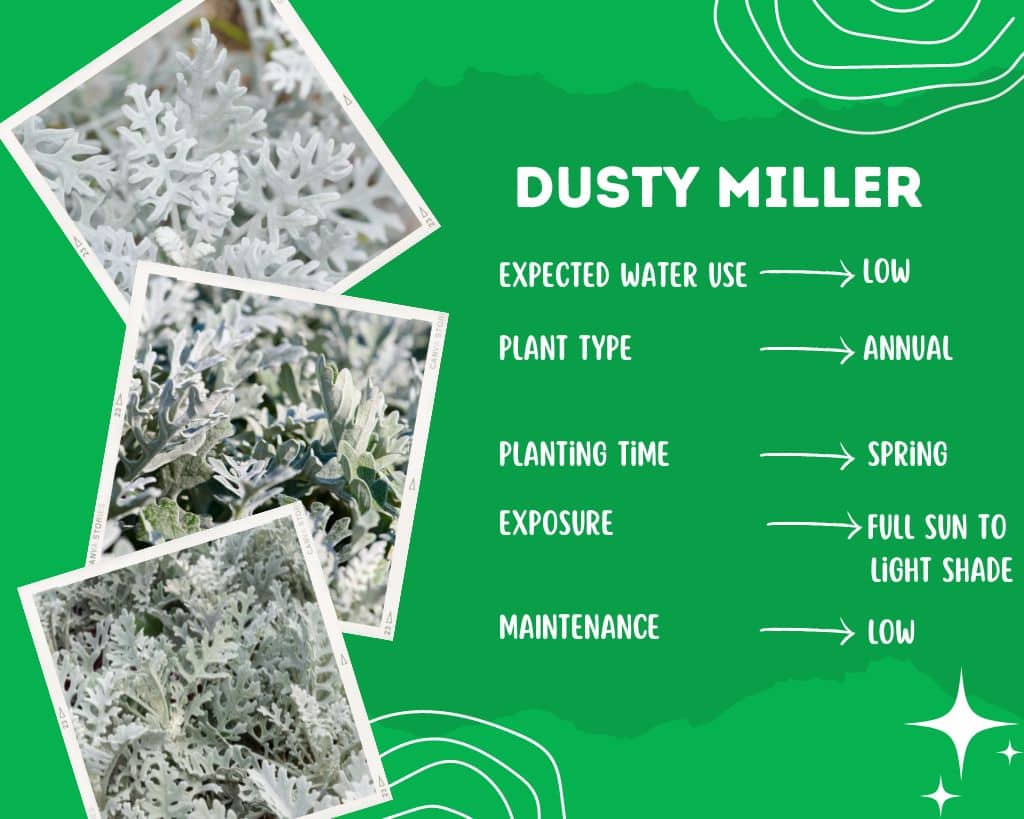
The velvety texture of its leaves adds a unique dimension to garden beds and borders, creating a captivating contrast against greenery.
Beyond its aesthetic appeal, Dusty Miller’s drought-tolerant nature makes it well-suited for the region’s climate, requiring minimal water once established.
Whether enhancing container plantings, lining walkways, or softening hardscape edges, Dusty Miller offers an elegant solution to drought-resistant gardening.
While not native to Central Texas, it can be readily found in gardens, landscapes, and commercial spaces throughout the region, testifying to its popularity as a reliable and visually striking plant choice.
- Height: 6 to 12 inches
- Spread: 6 to 12 inches
- Zones: Annual or tender perennial (often grown as an annual)
- Common Names: Silver Ragwort, Silver Dust
Vines to Elevate Your Garden
Vines are versatile in gardens, offering vertical growth, covering unsightly structures, or providing an elegant backdrop.
Coral Honeysuckle (Lonicera sempervirens)
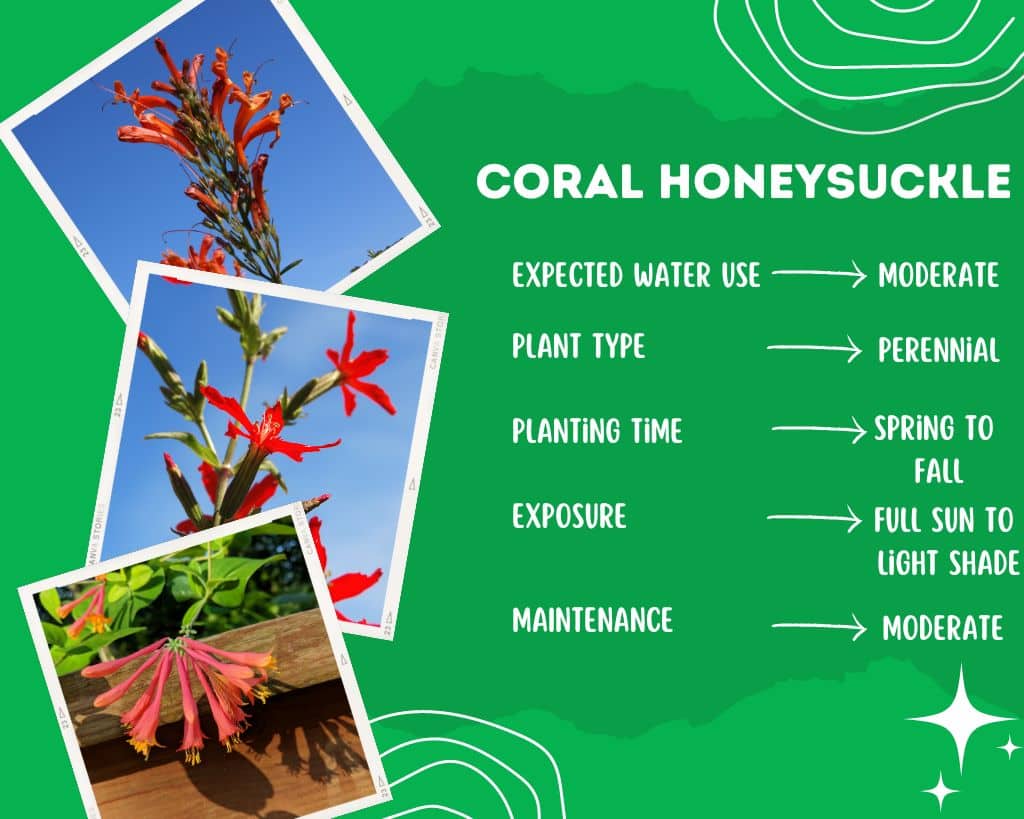
This native vine is both beautiful and beneficial. Its tubular red or coral flowers are a favorite among hummingbirds and pollinators.
Coral Honeysuckle’s drought-tolerant nature aligns perfectly with Central Texas’ arid climate, making it a wise choice for water-wise landscapes. It can be employed as a versatile climber in these settings, adorning trellises, fences, or arbors with its vivid blooms.
- Height: 6 to 10 feet
- Spread: 3 to 6 feet
- Zones: 4 to 10
- Common Names: Trumpet Honeysuckle, Woodbine
Crossvine (Bignonia capreolata)
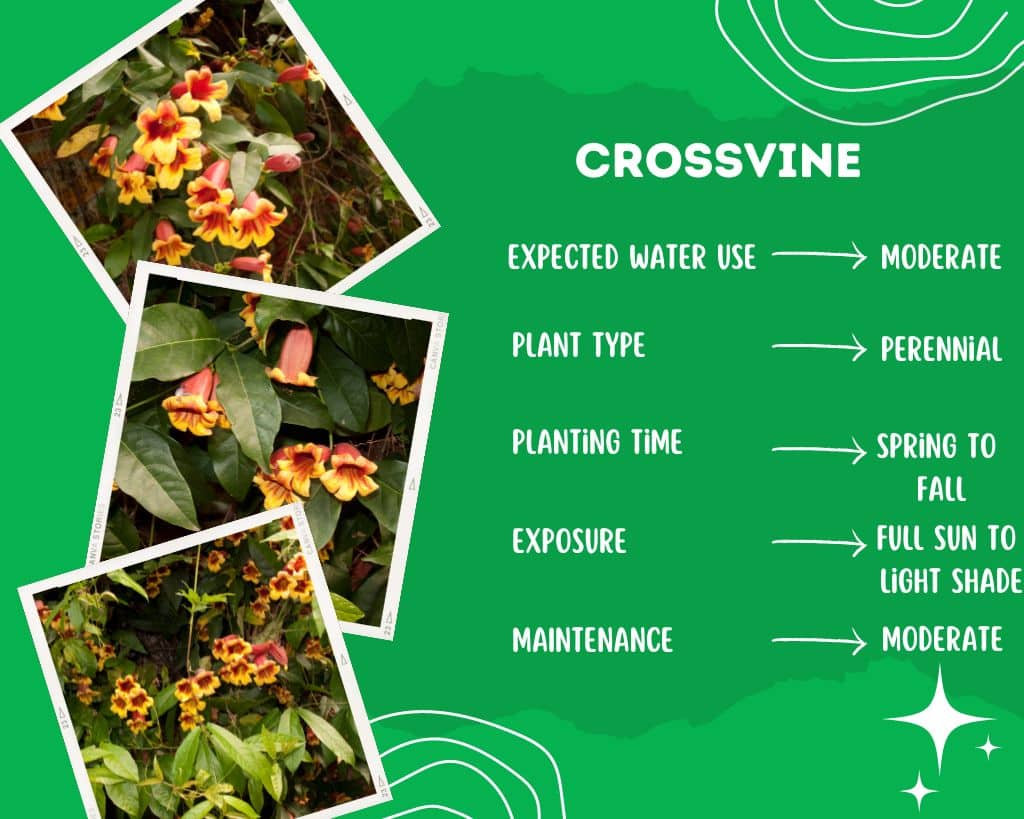
Showcasing color and interest with its vibrant orange-red blooms, the Crossvine is a sturdy climber, ideal for fences and trellises. This fast-growing vine also offers a robust and evergreen presence, enhancing the charm of gardens year-round.
Thriving in full to partial sun and adaptable to various soil types, it’s a valuable asset to Central Texas gardens. While native to the southeastern United States, including parts of Texas, Crossvine has gained popularity in Central Texas for its striking appearance and ecological contributions to pollinator-friendly landscapes.
- Height: 30 to 50 feet (as a vine)
- Spread: 5 to 10 feet
- Zones: 6 to 9
- Common Names: Trumpet Flower
Conclusion
Planting a garden in Central Texas demands careful selection. Opting for drought-tolerant plants offers myriad benefits:
- Sustainability: These plants require less water.
- Aesthetic Appeal: Drought-resistant plants are visually captivating.
- Wildlife Attraction: Many of these plants attract local wildlife.
- Low Maintenance: These plants often require less care due to their inherent ability to withstand challenging conditions.
So, whether you’re an experienced gardener or just starting to explore the world of landscaping, don’t forget to consider these drought-tolerant plants for Central Texas as your allies in creating a sustainable and visually captivating oasis.




